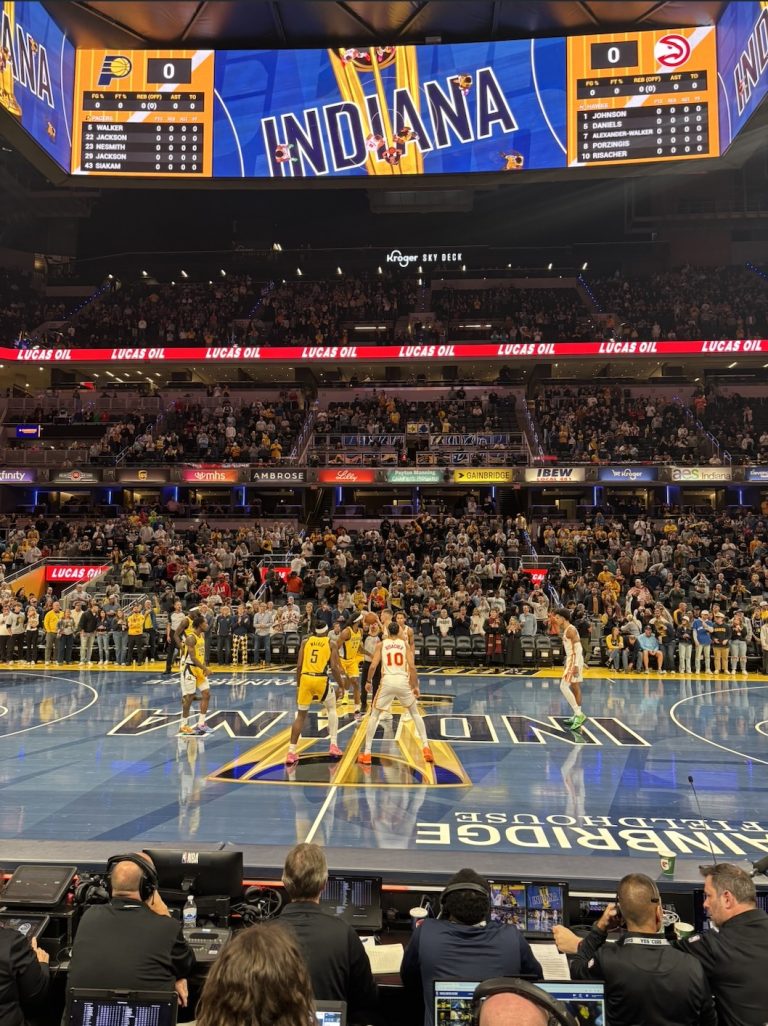In the case of many art projects, materials are often bought in bulk then never used again. University of Indianapolis alumna Bethany Daugherty, graduate of 2013, offers up a solution with her secondhand craft store called ReCraft.
From knitting to a form of lace-making known as tatting, Daugherty said she has been a craft lover her entire life. She did not, however, start out with a craft-related occupation. Having double majored in violin performance and creative writing, Daugherty said she grew tired of music and teaching for a living and began seeking out a new career.
In the meantime, she and her friend Julia Spangler, who met at UIndy through a mutual bluegrass band, had been involved in environmental efforts such as clothing swaps since 2013. Spangler runs her own business as a sustainable events consultant. Because Daugherty had been an enthusiastic volunteer, Spangler suggested she start a creative reuse center.
“Bethany’s the perfect person to run it,” Spangler said. “She’s passionate about crafting and creating things, as well as being stable and not wasting things that are perfectly good. So it’s a perfect mix for her.”
Following through on her friend’s advice, ReCraft opened its doors on Nov. 1, 2018. Located at 1802 Shelby Street, ReCraft is a thrift store for craft and hobby supplies. Customers are able to select individual materials, such as a single button or just a few ribbons, as opposed to buying an entire container of buttons or ribbons at a first-hand retailer. According to Daugherty, buying craft supplies secondhand is a sustainable alternative because it saves on the production of new materials while also preventing unused materials from being wasted.
“Every crafter has stuff in their house that they’re not using anymore…and every crafter wants to go and buy something for their next project,” Daugherty said. “So [ReCraft] is kind of bringing together those two ideas.”
Accessibility and community outreach have been important elements since ReCraft’s inception, Daugherty said. Given the outspread of economically-disadvantaged people from Fountain Square to the Bates-Hendricks neighborhood, and having grown up below the poverty line herself, keeping prices low has been a priority for her, she said. ReCraft has also partnered with the Community Food Box Project and now has a miniature food bank. The bank is located outside ReCraft’s doors and is free to the public. ReCraft customers who donate non-perishable goods, hygiene products and shoes to the box are given a 10 percent discount on purchases. Daugherty said she refills the food box twice a day, and afterwards, it is empty each and every time.
In addition to the food box, the storefront of ReCraft also has a box for free craft supplies and a miniature library where patrons can take and donate free books.
“A lot of what we do with the community outreach and that kind of stuff is…providing the things that people need to be human,” Daugherty said. “We need food to live and to be human. We need knowledge. We need creativity and art.”
Daugherty said she has seen an unexpected increase in patron accessibility with the opening of the Red Line, which has a stop located just around the corner from ReCraft.
“It’s literally right on my doorstep, and people can take the bus to me so well, and that’s really incredible and important,” Daugherty said.
Outside of the customer growth, she has viewed the proximity to the Red Line as both a worthwhile investment for the city and into ReCraft’s ideal of accessibility. Daugherty said that she gets to be an ambassador for public transportation and the Red Line.

While Daugherty has appreciated the environmental efforts and community outreach that she has achieved in less than a year since ReCraft opened, she admitted that the business has not come without its challenges.
“I actually have been getting so much stuff that there are times that I have to say I can’t accept donations for a month, because of the sheer amount of things that people bring me,” Daugherty said.
ReCraft has implemented a month-on-month-off donation schedule, and Daugherty hopes to implement organizational tactics and impromptu volunteer assistance in hopes that she’ll be able to take as many donations as she can.
Equipped with the sensibilities of both an alumna and an environmentalist, Daugherty said she recognizes that the pressure to uphold sustainable practices among many college students is high. Given the proximity to campus and the Red Line, she hopes that ReCraft is a viable resource for creative UIndy students to seek out environmentally-conscious methods of producing their next projects.
“Some people might think these things are out of their reach, but to be able to take it and put it within their reach is just really neat,” Daugherty said. “Just seeing people light up and come alive and just get really excited about that has been really cool.”






